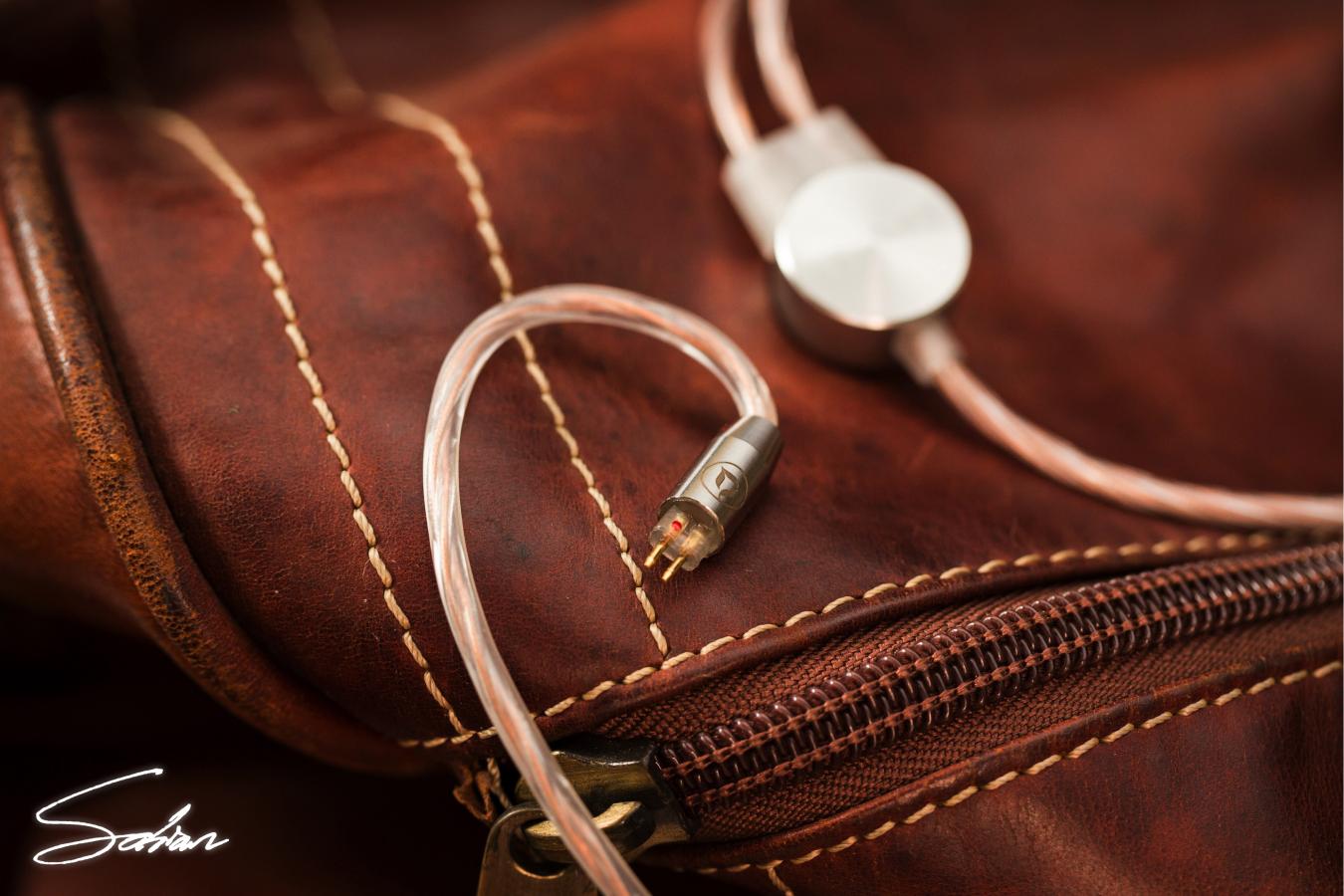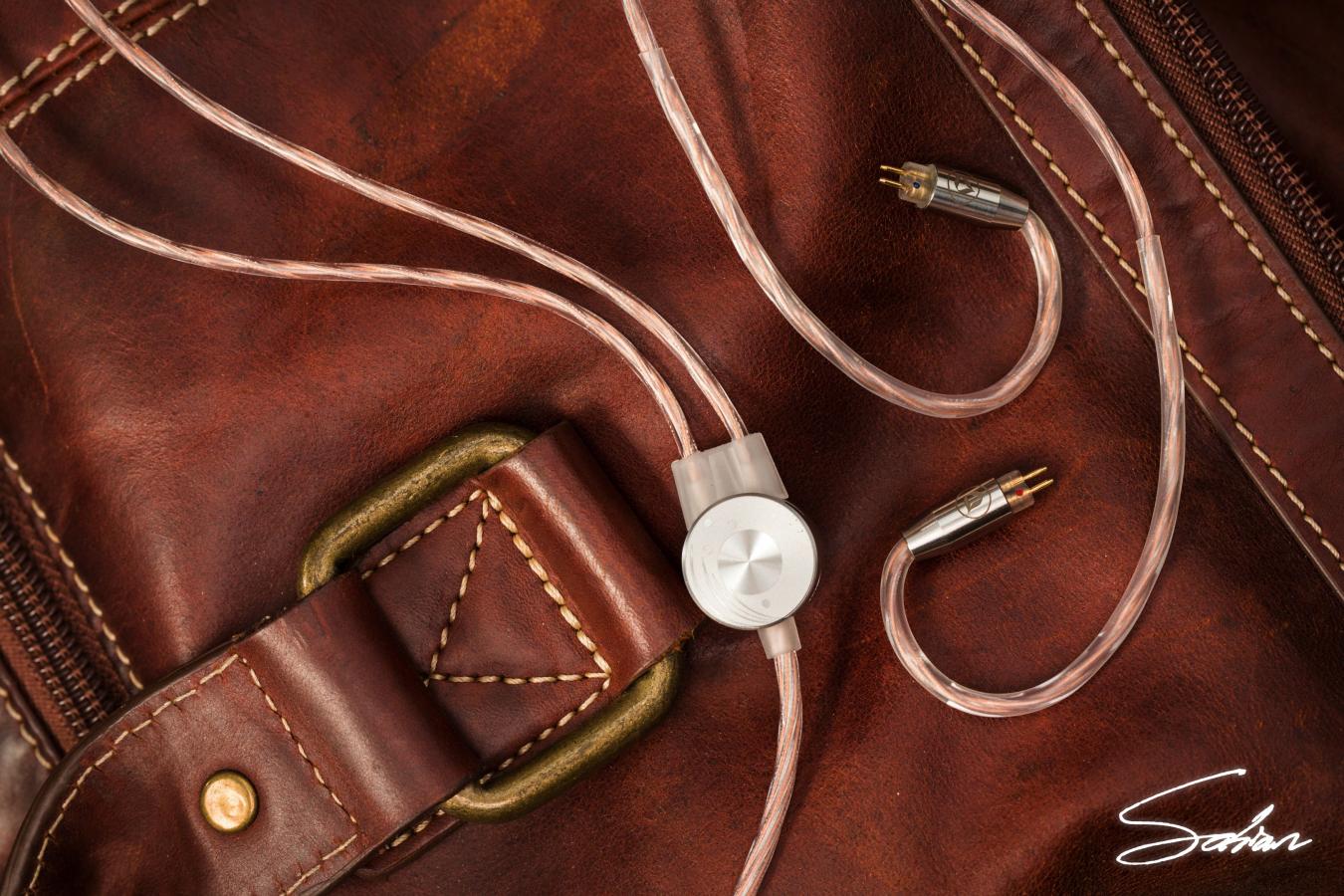Sound Impressions
The OSLO is unique in that it almost emulates the effects of a vintage mastering compressor. Like a limiting amplifier, it gently soothes peaks and infuses warmth, but without compromising cut, snappiness or definition. While it’s not the most clinically-nuanced cable out there, the OSLO does manage to pair its musical, harmonic wetness with outstanding resolution. The stage it posits is admirably large, but more impressive is its stability. More dynamic-sounding monitors like 64 Audio’s A6t won’t lose any of their spunk. Rather, all that impact is now set upon a rock-solid background with heaps of headroom. The technical work it’s able to accomplish without altering tone or dulling transients is masterful.

OSLO brings a warm, organic timbre to the low-end. But, uniquely so, in that it does this whilst preserving the airiness and definition of the bass. This isn’t a low-end thickened, bloomed or smeared to amplify presence. Rather, it’s given an analog meatiness and improved tightness in equal, complementary measure. There’s a slight mid-bass tilt, which makes the OSLO a particularly good pairing with sub-bass-oriented IEMs. As you’ll probably tell by the end of this review, the A6t-and-OSLO pairing is one of my recent favourites. Kick drums sound meaty and three-dimensional, but they sound airy and open as well. Bass guitar possess a similar balance of resolution and volume. You’re given room to analyse and the tone to enjoy all at once. That it intrudes on neither the midrange nor on overall transparency is the cherry on top.
I’m very much taken by the OSLO’s lower-midrange. They’re expressive, textured and vibrant, without that dense, heavy cloy-ness that typically plague cables with a similar tonality. Listening to the pianos and toms on Stevie Wonder’s Do I Do on the A6t-and-OSLO pairing is an unrivalled pleasure. Those instruments are punchy and enriched just enough, without any loss in transparency. The same goes for the toms on Gallant’s Doesn’t Matter from his In The Room sessions. Though they’re panned left and right, they’re as dynamic as the centre image. By comparison, the upper-mids aren’t as excited. Returning to Do I Do, the least dynamic instrument in the mix is ironically Stevie Wonder’s vocals; sung in a higher pitch. Thankfully, they never feel sucked out, and the OSLO’s stability allows you to keep track of those vocals effortlessly.

The OSLO’s top-end affectations are my favourite bits. Despite the warmer tonality, you won’t find the generic roll-off cables often resort to to achieve this signature. Rather, the OSLO refines the top-end marvellously. Returning to the compressor analogy, the OSLO dampens any irritative peaks, whilst preserving the in-ear’s inherent snappiness and cut. With in-ears like Custom Art’s FIBAE 4 or 64 Audio’s A6t – where transients aren’t necessary harsh, but they can fill the image with energy rather quickly – you’ll get infinitely greater headroom for those treble notes to clash, ring and fizzle out. This means you won’t get constantly bombarded by tizzy cymbals every measure. Rather, what you’ll hear is a refined, elegant image where you’re more able to appreciate the track’s dynamic range, detail retrieval and imaging.
OSLO Contact Enhancer Impressions
With the Contact Enhancer applied, I heard several very subtle changes. The sum of those changes is a darker, more stable background, sharpened micro-detail retrieval and a deeper low-end. The darker background comes from quicker top-end decay. Notes here are tighter, cleaner and a hair sharper. On Do I Do, the little shakers and synth lines in the background become more focused and apparent. Though, you lose a bit of that vintage airiness in exchange. The sub-bass also gains texture and presence. So, it’s a less breezy, unified tone in favour of higher technical performance. To apply or to not apply the enhancer will come down to preference. But, to my ears, it’s a very subtle shift either way.
Now, since the Contact Enhancer is essentially the OSLO in liquid form, I wanted to know how it’d affect a cable from a different manufacturer. To that end, I decided to use PW Audio’s 2-wire 1960s along with Custom Art’s FIBAE Black. With this particular pairing, I noticed some carry-overs from the previous paragraph. The background did become darker, which caused treble notes and micro-details to pop more apparently. However, I also noticed a refinement of the FIBAE Black and 1960s’ 6kHz peak. That low-treble spike no longer sounded brittle at times. Rather, it became consistently tame. The Black’s low-end was much cleaner-sounding as well, with more sub-bass presence rather than mid-bass.
Suggested Pairings
The OSLO’s meaty, vintage colouration makes it a fantastic complement for brighter, leaner IEMs. But, the technical performance it manages to achieve makes it a versatile pick as well. Here are three of its most notable attributes:

Clean, airy, resolving warmth: Unlike most cables of its ilk, the OSLO’s warm touch comes with an unprecedented amount of resolution, openness and air. That means, despite the extra body, you won’t compromise the in-ear’s cut at all. So, if you have a monitor you wish to beef up without losing any of its attack, the OSLO is a wonderful candidate to consider.
A balance between mid- and sub-bass: The OSLO’s lows are wonderfully defined and airy in spite of the extra girth it gives. This makes it a versatile low-end that’ll still fare well with warmer-sounding IEMs. But, it also makes an exceptional pair with sub-bass-heavy monitors, in order to balance that fun, visceral rumble with some melodic musicality and tone.
Treble-peak smoothening without roll-off: Again, the OSLO works very much like a vintage mastering compressor that rounds out brittle peaks for a more refined and smooth response. But, unlike less capable cables, the OSLO does this without rolling-off the top-end. So, resolution, imaging precision and stage stability are maintained with the refinement.

Obviously, the OSLO’s warmer tilt won’t please all. If your aim is to add energy, sparkle or crispness to your IEMs, the OSLO won’t necessarily provide. So, if the following two aspects are what you’re looking for, the OSLO may not suffice:
An intimate or forwardly-placed upper-midrange: The vibrancy and bravura along the OSLO’s lower-mids aren’t necessarily matched by the upper-mids, which are more laid-back. Although this calmness is beneficial in that it prevents the OSLO from sounding too energetic, it also means that it won’t do much for in-ear monitors with similarly laid-back upper-mids.
Clinical definition and/or clarity: The OSLO priorities body and warmth than sharpening and clarifying raw detail. Although the resolution, layering and stage expansion it possesses is very impressive, it’s not one to push nuances in your face.



